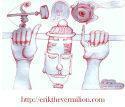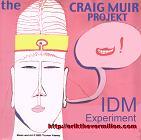Be Kind! Share with your Team, with your Family, with your Buddies!
Click The Button Now & Like This On Your Facebook Page!
Monday, May 26, 2014
Microphone Pop Filters And Why You Should Acquire One
Plosives are produced by the swift release of air straight into the mic practically always soon after a total closure of the oral airway. Consequently, a rapid burst of air is blown directly into the mic.
Commonly, plosives are produced with words that start with P, B, T and D. Alternatively, sibilance is the hissing sound that is given off when speaking words with S or SH sounds. Sibilance is not frequently tremendously filtered but for actually strong sibilance, it can at times be a great tool.
Microphone pop filters are chiefly utilized to minimize plosives and is generally very crucial when recording human vocals. Still nonetheless, these pop filters are often utilized for recording string instruments despite the fact that several people say that pop shield are useful only based on the selected musical instrument used.
Pops and plosives should really be eliminated since it can drastically destroy a voice recording and can be very difficult to eliminate after recording even by qualified professionals.
Having the vocalist away from the mic can minimize the plosives and pops to some extent (like 6 to 8 inches) mixed with a good mic technique, which can also be of help but pop shields are the best ways to minimize plosives and is truly a necessity when recording vocal tracks regardless of the environment.
Microphone pop filters are often clamped into the mic and will be inserted with the adaptable arm in between the mic and the vocalist's lips at a space of around 3 to 4 inches. Vocalists should not really press up against pop shield, which can support sound engineers more in producing volume and gain levels.
Microphone pop filters are ordinarily made out of nylon or metallic mesh. Other people consider that nylon may filter pops more but it can also be destroyed easily and is more difficult to clean up.















